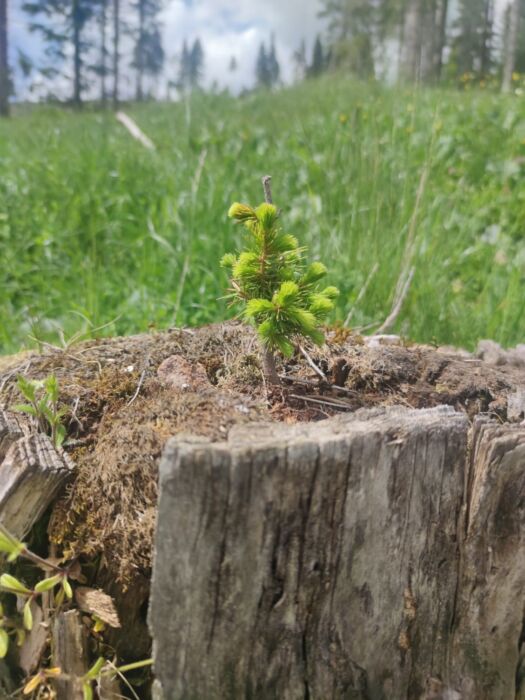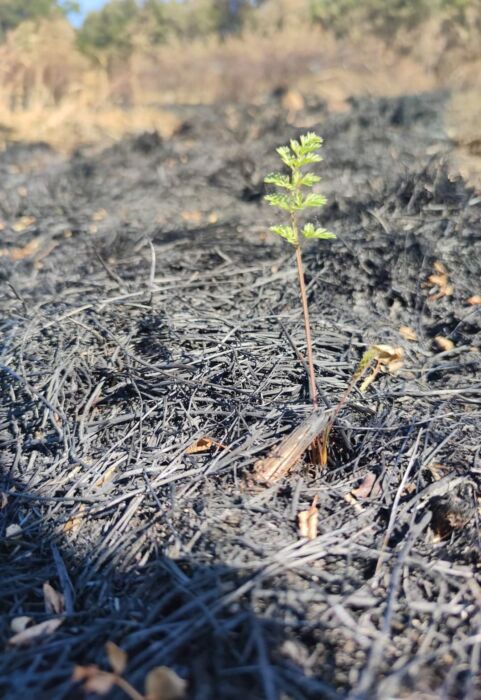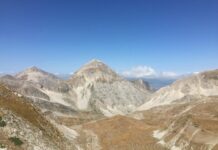
The word “resilience” comes from the Latin word “resilire” meaning to bounce back, to jump back. Originally resilience was spoken of almost exclusively in engineering as the ability of a material to withstand impact without breaking. Today, however, it is a term added to our vocabulary and uttered in our conversations almost to give us that extra boost needed to cope with life’s difficulties. In psychology, resilience denotes an individual’s ability to react positively following traumatic events by reorganizing one’s life and working on reconstituting oneself. A resilient person is able to face adversity and overcome it, adapting to the evolving dynamics of everyday life with a tenacious and non-surrendering spirit.
However, the ability to be resilient has deeper roots than human resilience. In ecological resilience we talk about the “amount of abnormality an ecosystem can tolerate without changing its self-organization processes and basic structures,” so after absorbing trauma, which in ecology is called disturbance, initial structures and functions are restored. Indeed, nature has always been a master of resilience, and we can observe this directly with the current period of climate emergency in which the frequency, as well as the vehemence, of extreme natural phenomena is greatly increasing. It then must be able to restore its equilibrium following the raging events that have disrupted its homeostasis.
Think of the violent storm Vaia in October 2018, what has been referred to in the forestry world as “God’s hammering”: strong wind gusts (over 200 km/h) hit the eastern Alps, Trentino and Veneto causing the uprooting of more than 42 million trees, mostly man-made spruce forests. The dismay and bitter sadness of helplessly observing the alteration of an evocative, almost fairy-tale-like alpine landscape and the feeling that nothing could ever be the same again crossed the deepest paths of environmental sensitivity that each man cherishes.
All seems irretrievably lost, but it is only “appearance” (and understandable apprehension) because the forest returns and has always returned, each time differently, but always the same in time. Disturbances, no matter how often damaging, shape cenoses that are able to self-regulate and autonomously provide for the replacement of the forest stand. Certainly, the timescales of nature, and in the specific case of the forest, are long and in parallel incompatible with those of man, but if this were not the case, the figure of the silviculturist would not exist, who works by imitating natural processes, accelerating their rhythms.
The difficulty consists precisely in the decisive determination of the type of intervention to be implemented, but also and above all of the timeframe within which it is reasonable to operate: the “good silviculturist,” in accordance with the modern principles of “silviculture closest to nature,” is not in a hurry to restore the disfigured environment (except in emergency cases in which the intervention serves to ensure public safety, for example, through the accommodation of a slope), but often simply waits and monitors since our times cannot be equated with those of nature so that acting hastily (artificially reconstituting the forest) is not always the solution to the problem; in fact, forests of artificial origin-often monospecific and homogeneous in structure, poorly differentiated-suffer more from the harmful effects of disturbance because they are more unstable (and less resilient) than a primary or semi-natural forest.
With natural regeneration, on the other hand, it is possible to ascertain increased levels of biodiversity and thus the formation of stable and structurally better stands: nature is resilient, patient and rarely makes mistakes! So, it tends to be the case that a non-man-made stand responds better to disturbances, net of multiple and complex variables and situations that presuppose a thorough and accurate assessment.

Another factor that forests have to contend with is fire. By definition, a fire is a disturbance whose causes can be natural or man-made. Prescinding from anthropogenic ones (malicious or culpable), natural causes of fire are related to volcanic eruptions, self-combustion and lightning and constitute only 2% of all fires. If natural, well-established studies ascertain that fire acts as an “ecological agent,” an advocate of shaping and regulating forest stands through the modification of their original structure. The main characteristics of disturbances and thus also of fires are: intensity, frequency and return time, and on these depend the responses enacted by the vegetation, namely the reaction of the organisms and/or plant organs involved (resistant or resilient) and thus the capacity for their recovery explicated through reconstitution or natural succession.
There are some plants capable of responding positively to fire and whose effect does not appear deleterious but rather almost “regenerative” and stimulating, namely Pyrophytes: species distinctly found in Mediterranean environments where seasonal aridity contributes to raising the risk of flammability. Pyrophytes can be active or passive: the former after the passage of fire burn but readily reproduce by rhizomes or other underground organs or dormant buds in the aerial parts or by fire-favored dissemination. The latter can be traced back to Aleppo Pine whose strobili open, due to the heat produced by the fire, dropping seeds to the ground according to a natural dissemination mechanism; the passive ones burn with difficulty due to the thick bark (e.g., Cork Oak) or the presence of fire-inhibiting chemicals, thus showing resilience to trauma. Then, unlike the resilient Pinus halepensis, Quercus suber is a resilient species and not really resilient in that it resists fire while maintaining its state and condition. Here, from an ecological point of view and in “regular and non-extreme cases,” fire is not an irreparably negative aspect.
Below is a photo of mine that is emblematic of how nature can be resilient and resilient after the passage of fire. This is an arson fire from late August 2021 and located near the Archaeological Site of Monte Torretta, in the municipality of Pietragalla, Basilicata.

Resilience is a crucial concept not only in ecology, but also in the socio-economic, and political spheres. We talk about resilience in the PNRR, a strategic plan aimed at revitalizing the economy and implementing ecological (greener) and less impactful economic choices, as well as digital and innovative ones. Strictly speaking, economic resilience is associated with GDP and is measured by defining as resilient those regions that after an economic shock return to their previous performance: they are found to be “shock resilient,” i.e., able to absorb the shock and restart from it in order to restore the value of initial wealth and well-being.
Wanting to be more practical, resilient is the entrepreneur, the artisan, whose “small business” resists competition and offers buyers quality solutions to needs without succumbing under the weight of powerful multinational corporations.
“We all have motivations. The difference between individuals lies in their ability to make them last long despite obstacles, difficulties and problems. The ability to persevere, to make motivation last long is called resilience.”
Pietro Trabucchi






































